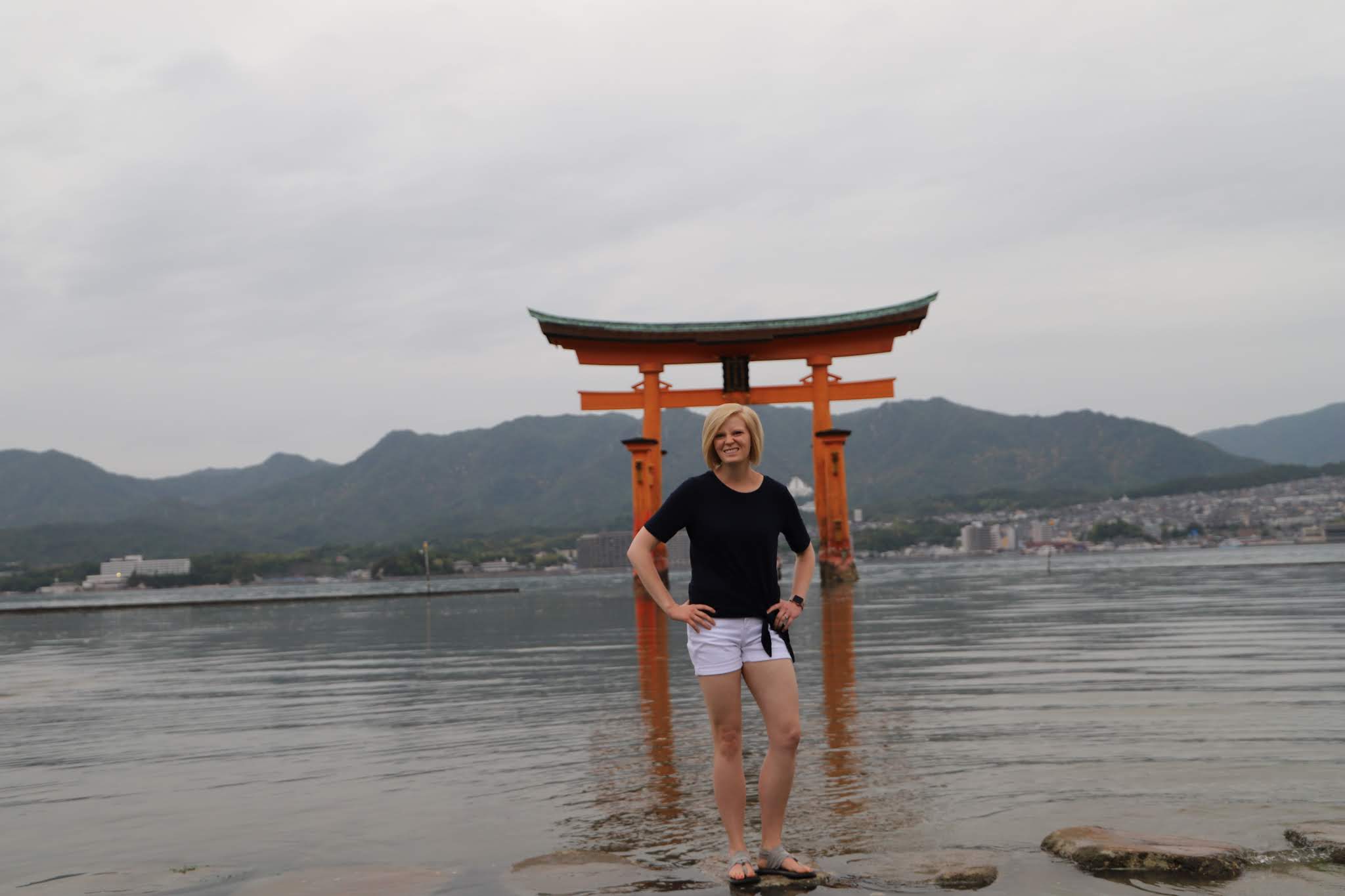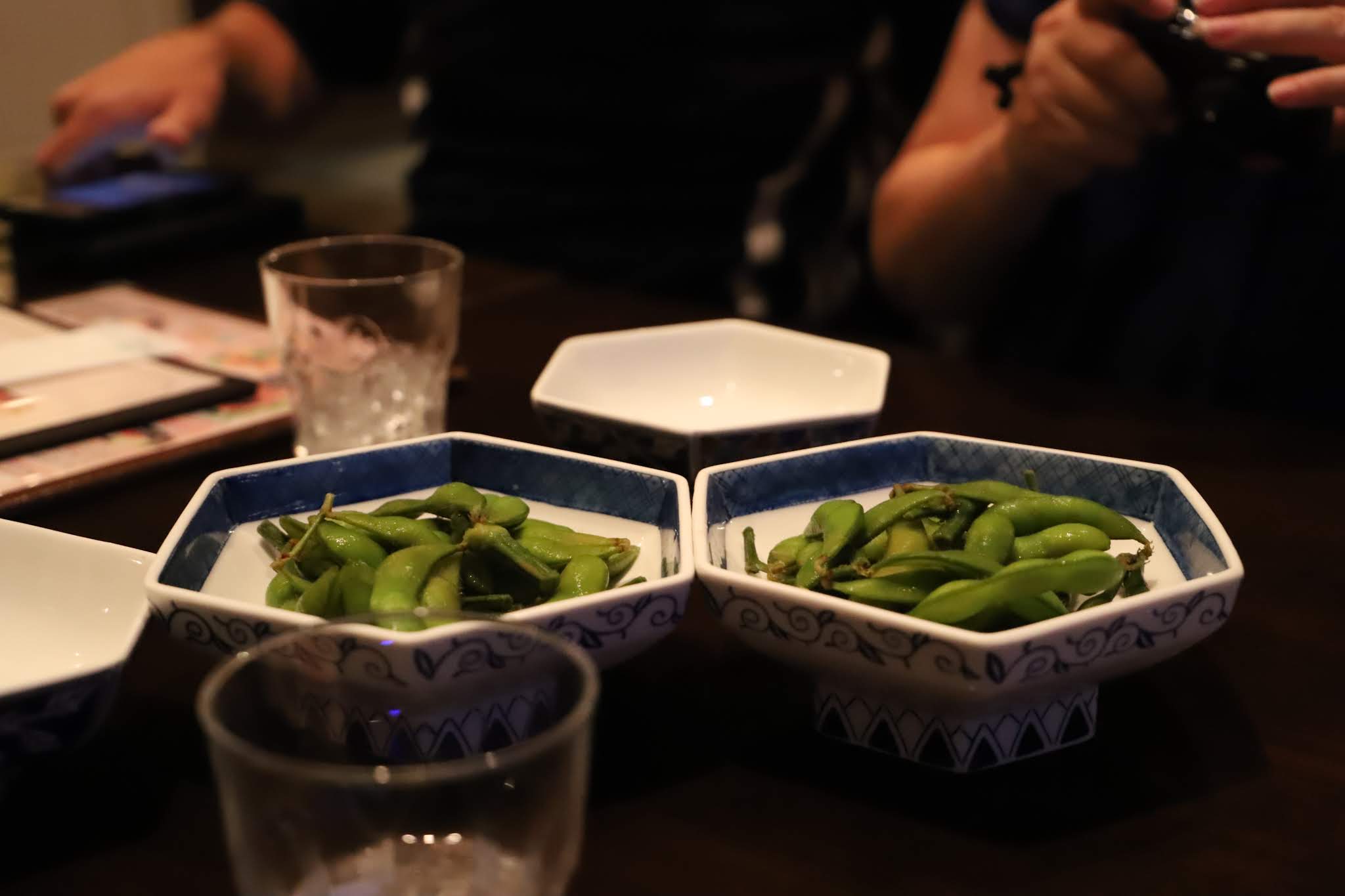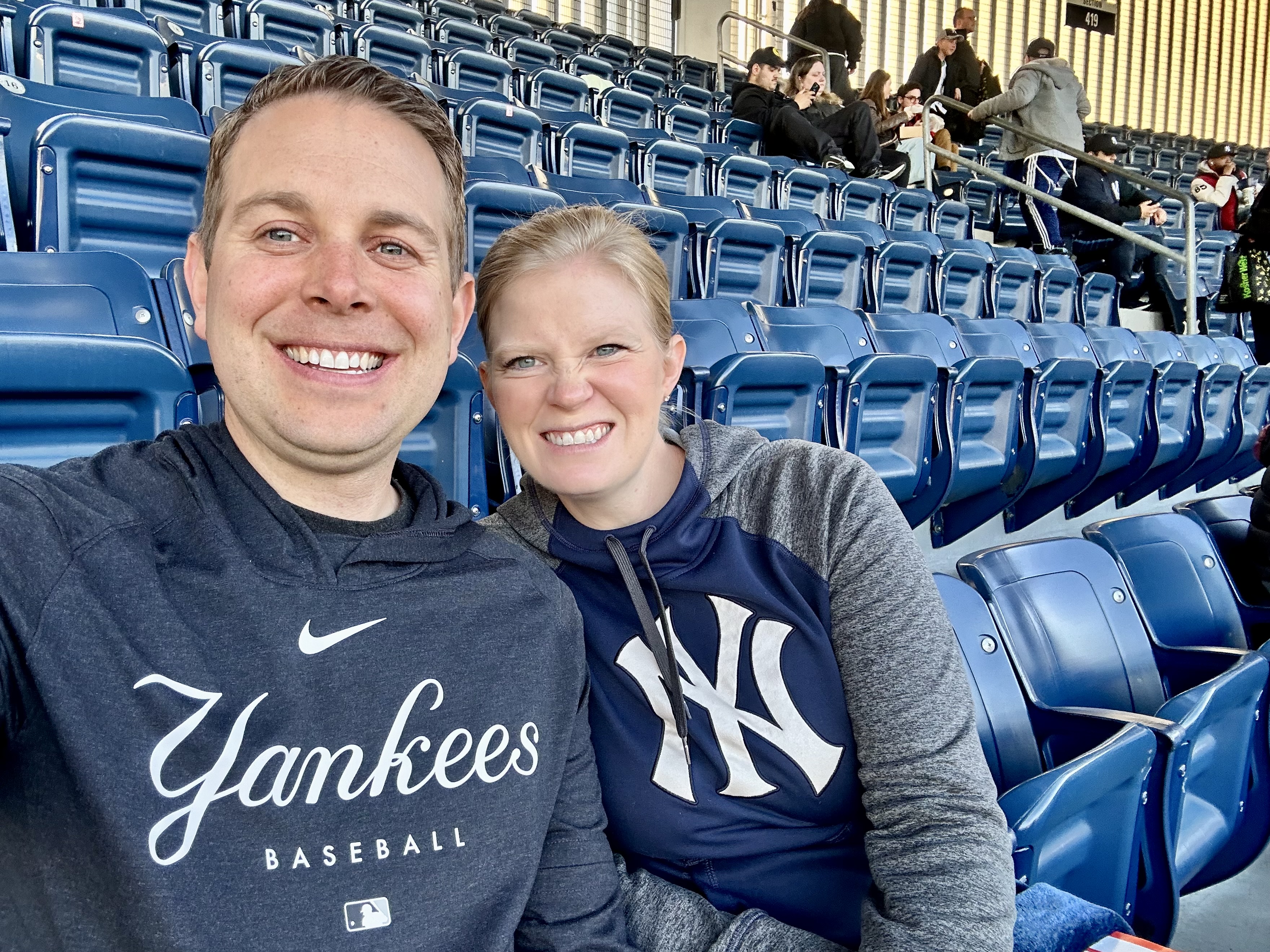Day 7 – Hiroshima
We had a great, albeit somber day in Hiroshima. Eric and I both have family history with World War II. My Grandfather, Vail Nielson, served in the Navy at the end of WWII. Eric’s great-grandfather, Delbert Johnson, served as a marine in WWII and fought on Iwo Jima. Both of our grandfathers were stationed in the Pacific during the war. Hiroshima was an important stop for us to get back to our roots and remember the cost of war.
We woke up and enjoyed a very large breakfast at the hotel before walking to the Peace Memorial Park. We stayed very close to the park so it was a quick walk and then we were at the Museum. In the museum, we learned about the Atomic bomb and its aftermath. Between August 6, 1945, and December 31, 1945, 140,000 people perished in Hiroshima due to the Atomic Bomb. Of the survivors, many suffered life-long ailments including cancer and burn surgeries. It’s hard to understand the true magnitude of the bomb – the suffering it caused for hundreds of thousands of people is so tragic.
One especially poignant section of the museum showed children who perished soon after the bomb. Many children were at school and some parents never found their children. Of the families that did find their children, they simply had to comfort them while they died. One story that was shared in the museum was of a child who made it home. Her mother told her that she was so happy that she had come home to her. Unfortunately, she passed soon after. Another child was only 2 when the bomb was dropped. They miraculously survived the bomb mostly unscathed. However, soon after the bomb, there was black rain that was radioactive that many citizens of Hiroshima were caught in, including this child. 10 years later she developed leukemia. She believed that if she folded 1,000 paper cranes her wish to survive would come true, so she folded her paper cranes over a month. Unfortunately, leukemia still killed her.
The museum shared stories of victims and survivors and truly painted a picture of the horror of war. I can see why Hiroshima is the City of Peace after enduring something so awful. It truly inspired me to seek out peace more in my own life. The rest of the museum showed a history of nuclear development. It was interesting to hear this from the Japanese perspective. They explained that the United States dropped the bomb because they were concerned about Russia becoming an ally with Japan and extending the war. Additionally, they had to justify the high cost of nuclear development to the American people. I always find it so interesting to learn the history of other countries. When we learn about the atomic bomb in America we are taught that the bomb was dropped simply to bring a quick end to the war. The Japanese version is far more nuanced.
It also explained how so many countries have since developed nuclear weapons many times more powerful than the bombs dropped in Hiroshima and Nagasaki. It seriously made me rage and wonder if the world is a better place than it was in 1945. The cost of war is truly horrific and I’m not sure it’s necessary. It made me think of the countless bombs that the United States dropped on Afghanistan and Iraq. Obviously, I don’t know all of the situations, but I do wonder whether it was necessary or if maybe there was another solution that didn’t cost thousands of civilian lives including children. War is devastating.
"Nuclear weapons and humankind cannot coexist indefinitely. Today more than ever, we must all embrace the A-bomb survivors' desire to ensure that no one else will suffer their pain and sorrow. We must inherit their determination and pass it on to future generations." - Quote from the Atomic Bomb Museum
After the museum, Eric took his grandpa back to the hotel to rest and they decided that it was time to end their trip a little bit early. We quickly called Delta and the hotel we were scheduled to stay at in Tokyo Disney and made the necessary arrangements for them to fly home the next day. It’s amazing how easily everything came together and it was a reminder that God is so mindful of his children.
 |
| Inside the museum, Eric bought a children's book that tells the story of the atomic bomb by telling the story of a tree that survived the atomic bomb blast. |
We then spent some time wandering through Peace Park. There is a cenotaph memorializing the victims and a children’s memorial to remember the children who perished and suffered as a result of the atomic bomb. The children’s memorial has a bell and the center is a paper crane to remember the child who folded the 1,000 paper cranes. It was very touching.
We then went over to the Atomic Bomb dome. This building was a government building before the Atomic Bomb. The epicenter of the bomb was the center of government and political activity in Hiroshima, which is why it was selected as the target. When the city decided to rebuild, they decided instead to build a park seeking peace. They also decided to leave this building standing as a reminder of the devastation following the war. This was somewhat controversial as victims and survivors felt it was too painful to leave it standing. For me, it was a reminder of how resilient people can be. Just behind this building are a beautiful river and so many buildings that have been rebuilt since 1945. People are so powerful.
We then took a tram to a Ferry terminal and then took a Ferry to Miyajima Island. The Ferry took about 10 minutes and it was so nice to be on the water. Miyajima is gorgeous and so green. I loved spending the afternoon here. Our first stop was the Itsukushima Shrine. We were really excited to see this Shrine because the shrine in Epcot has been modeled after this one. It was fun to be able to walk out under the gate and get some cool pictures.
Our next stop was the Miyajima Ropeway. This is a cable car that goes to the top of Mt. Misen for a stunning view of the Island. On our way, we got some street food including corn on the cob, grilled chicken, grilled beef, and a chocolate-covered banana. We enjoyed our snacks.
The cable car was really fun. Once we got to the top we had a little over an hour until the last tram down to the bottom so we quickly ran to the summit, enjoyed the views, and then turned back around. Sue was such a trooper. She has walked, hiked, and climbed at least a thousand stairs on this trip. We are so grateful they came with us. Miyajima Island was so green and beautiful. We all commented on how different all of the places we visited on this trip were – Miyajima was very relaxed.
As we were taking the cable car down to the bottom of the mountain, Ardis told Greg to make a birdcall. He was sarcastic about it and so Ardis threw water on him. We were laughing so hard. It was hilarious.
Once we got to the bottom we went back to the Itsukushima Shrine because the tide was coming in and it looked like it was floating. We really enjoyed getting some cool pictures here and enjoying the scenery before taking the Ferry back to Hiroshima. We got Tempura and katsu pork for dinner – it was great. We then took a tram and a Subway to get back to our hotel ready to head back to Tokyo tomorrow.
We are so grateful that we’ve been able to spend time with Eric’s grandparents, Ardis, and Greg here in Japan. It’s been such an honor and a privilege to visit Arno’s mission field with him.






























































































Comments
Post a Comment